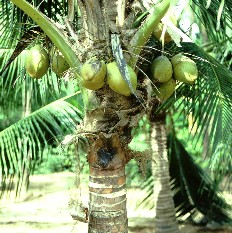ScienceDaily (Nov. 29, 2007) — The United States has embarked on an
ambitious program to develop technology and infrastructure to
economically and sustainably produce ethanol from biomass. Corn stover,
the above-ground material left in fields after corn grain harvest, has
been identified as a primary feedstock. Stover and other crop biomass or
residue is frequently referred to as "trash" or a waste, implying it has
minimal value.
However, when returned to the land, this carbon-rich material helps
control erosion, replenishes soil organic matter, and improves soil
quality. Organic matter in the soil retains and recycles nutrients and
improves soil structure, aeration, and water exchange characteristics.
In addition, organic matter is the energy source for the soil ecosystem.
"Sustainable biofuel production will require that the functions of
organic matter in the soil be addressed before crop residue is removed
from the land," states Doug Karlen, USDA-ARS soil scientist at the
National Soil Tilth Laboratory at Ames, IA.
Dave Lightle, USDA-NRCS agronomist with the National Soil Survey Center
in Lincoln, NE says, "To date, projected sustainable harvest levels have
been calculated by reducing total stover production by amounts needed to
keep soil erosion losses within accepted limits."
Most estimates of the amount of crop residue that can be sustainably
harvested consider only erosion as a constraining factor, without
considering the need to maintain soil organic matter. Recently Jane
Johnson and her coworkers at the USDA-ARS North Central Soil
Conservation Research Laboratory at Morris, MN, reported estimates of
the minimum biomass input needed to maintain soil organic matter.
Wally Wilhelm, USDA-ARS scientist with the Agroecosystems Management
Research Unit, Lincoln, NE, and his team compared the amount of stover
needed to replenish soil organic matter and control water and wind
erosion under a limited number of production conditions—continuous corn
and corn produced in rotation with soybean with moldboard plow or
conservation tillage practices.
The amount of stover needed to replenish soil organic matter was greater
than that required to control either water or wind erosion in the ten
counties (in nine of the top eleven corn production states in the U.S.)
investigated. This outcome emphasizes the need to further evaluate the
validity of widely circulated estimates of U.S. cropland capacity to
sustainably supply feedstock for the emerging cellulosic ethanol industry.
The authors conclude that there is a critical need to gather additional
high-quality replicated field data from multiple locations to confirm
their calculations and to expand the computations to a broader range of
cropping systems before major decisions are made about the percent of
stover that can designated for biomass energy production. In addition,
they state that an extensive effort is needed to expand development of
existing crops, discover and develop unconventional crops, and create
and deploy advanced cropping systems that exploit the potential of all
crops so that biomass production can be greatly expand to provide a
sustainable supply of cellulosic feedstock without reducing soil organic
matter, thus undermining the productive capacity of the soil.
The article appears in the November-December 2007 issue of Agronomy
Journal and was the basis of a poster presentation titled "Soil Carbon
Needs Limit Biomass Ethanol Feedstock Supply" at the 2007 American
Society of Agronomy meetings in New Orleans in November 2007. This
research contributes to the USDA-ARS Renewable Energy Assessment Project
(REAP) goals and was funded by the USDA-ARS and USDA-NRCS agencies.
--
Check for earlier Pacific Biofuel posts: http://pacbiofuel.blogspot.com/

No comments:
Post a Comment